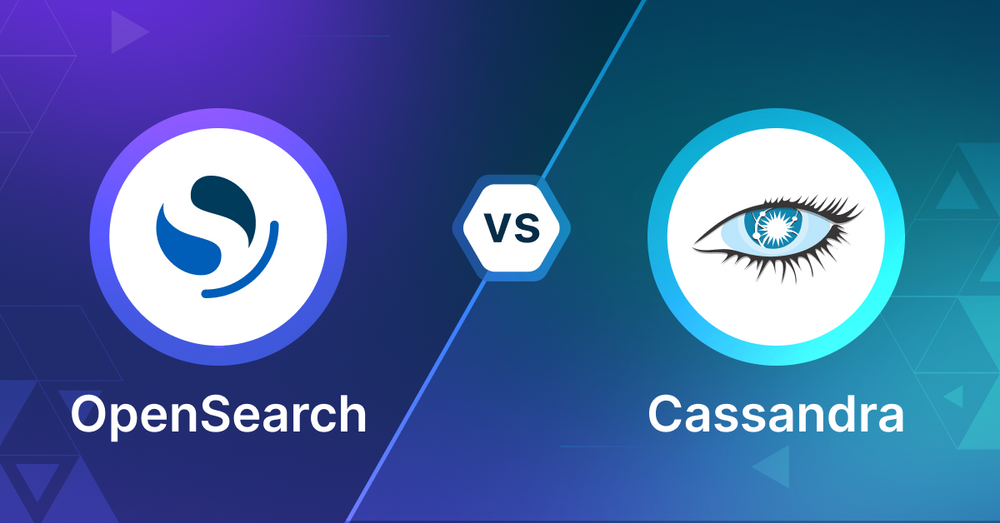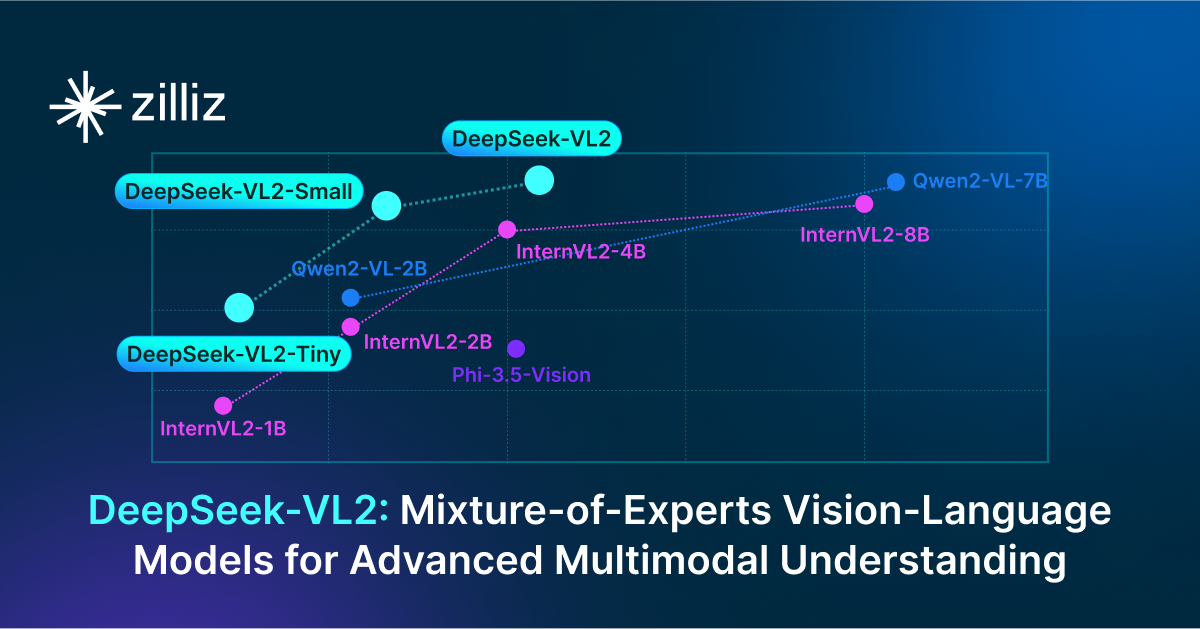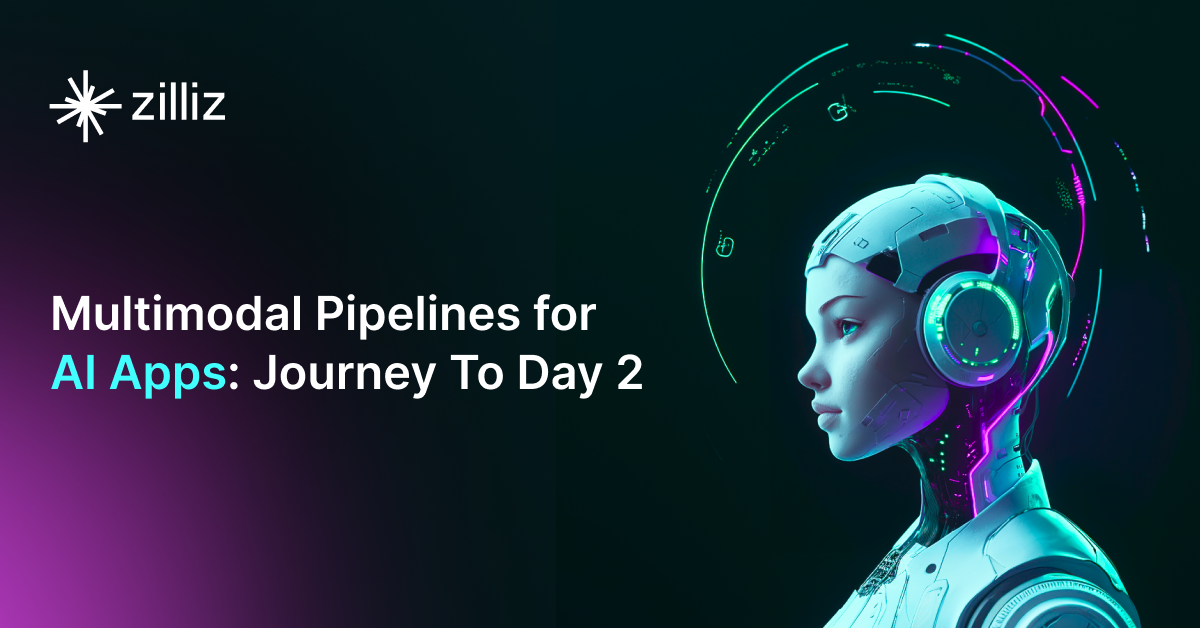Apache Cassandra vs OpenSearch: Choosing the Right Vector Database for Your Needs

As AI and data-driven technologies progress, selecting an appropriate vector database for your application is becoming more important. Apache Cassandra and OpenSearch are two options in this space. This article compares these technologies to help you make an informed decision for your project.
What is a Vector Database?
A vector database is specifically designed to store and query high-dimensional vectors, which are numerical representations of unstructured data. These vectors encode complex information, such as the semantic meaning of text, the visual features of images, or product attributes. By enabling efficient similarity searches, vector databases play a pivotal role in AI applications, allowing for more advanced data analysis and retrieval.
Common use cases for vector databases include e-commerce product recommendations, content discovery platforms, anomaly detection in cybersecurity, medical image analysis, and natural language processing (NLP) tasks. They also play a crucial role in Retrieval Augmented Generation (RAG), a technique that enhances the performance of large language models (LLMs) by providing external knowledge to reduce issues like AI hallucinations.
There are many types of vector databases available in the market, including:
Purpose-built vector databases such as Milvus, Zilliz Cloud (fully managed Milvus)
Lightweight vector databases such as Chroma and Milvus Lite.
Traditional databases with vector search add-ons capable of performing small-scale vector searches.
Both Apache Cassandra and OpenSearch are traditional databases that have evolved to include vector search capabilities as an add-on.
Apache Cassandra: Overview and Core Technology
Apache Cassandra is an open-source, distributed NoSQL database known for its scalability and availability. Cassandra's features include a masterless architecture for availability, scalability, tunable consistency, and a flexible data model. With the release of Cassandra 5.0, it now supports vector embeddings and vector similarity search.
Cassandra's vector search functionality is built on its existing architecture. It allows users to store vector embeddings alongside other data and perform similarity searches. This integration enables Cassandra to support AI-driven applications while maintaining its strengths in handling large-scale, distributed data.
A key component of Cassandra's vector search is the use of Storage-Attached Indexes (SAI). SAI is a highly-scalable and globally-distributed index that adds column-level indexes to any vector data type column. It provides unparalleled I/O throughput for databases to use Vector Search as well as other search indexing. SAI offers extensive indexing functionality, capable of indexing both queries and content (including large inputs like documents, words, and images) to capture semantics.
Vector Search is the first instance of validating the extensibility of SAI, leveraging its new modularity. This combination of Vector Search and SAI enhances Cassandra's capabilities in handling AI and machine learning workloads, making it a strong contender in the vector database space.
OpenSearch: Overview and Core Technology
OpenSearch is a service from AWS derived from Elasticsearch. It's designed for full-text search, log analytics, and now includes vector search capabilities.
OpenSearch offers a distributed architecture for scalability, real-time search and analytics, and support for structured and unstructured data. It provides a query DSL (Domain Specific Language), machine learning capabilities, and vector search functionality. OpenSearch's core technology is based on inverted indices, which allow for full-text search. Its vector search capabilities are built on this foundation, enabling similarity searches on high-dimensional data.
Key Differences Between Apache Cassandra and OpenSearch
Search Methodology
Cassandra's vector search is designed for similarity searches on high-dimensional data. It's suited for applications that require semantic understanding and contextual relevance. OpenSearch combines keyword-based search with vector search capabilities. This approach allows it to perform in scenarios requiring both full-text search and similarity matching.
Data Handling
Cassandra handles structured and semi-structured data in a distributed environment. Its data model allows for storage and retrieval of vector embeddings alongside other data types. OpenSearch is designed for both structured and unstructured data. It's effective in managing and searching text data, logs, and time-series information.
Scalability and Performance
Both Cassandra and OpenSearch are designed for scalability, but they approach it differently. Cassandra uses a masterless architecture that allows for linear scalability. This design enables it to handle large amounts of data across many nodes with consistent performance. OpenSearch uses a distributed architecture with primary and replica shards. This approach allows for scalability and provides options for optimizing search performance across a cluster.
Flexibility and Customization
Cassandra offers flexibility in data modeling and consistency levels. Users can adjust these aspects to their specific use cases. However, complex queries may require careful design of data models and indexes. OpenSearch provides APIs and a query DSL, offering flexibility in how data is queried and analyzed. It also supports plugins for extending functionality.
Integration and Ecosystem
Cassandra integrates with other big data tools in the Apache ecosystem, such as Spark and Hadoop. Its vector search capabilities also allow it to work with machine learning frameworks for AI-driven applications. OpenSearch, being derived from Elasticsearch, is compatible with many tools in the Elastic ecosystem. It works with log shippers like Logstash and visualization tools like Kibana (now OpenSearch Dashboards).
Ease of Use
Cassandra has a learning curve, especially for those new to distributed systems. Setting up and maintaining a Cassandra cluster requires understanding its architecture and data model. OpenSearch, with its roots in Elasticsearch, has a large community and documentation. Its REST API and query DSL are powerful but may take time to master.
Cost Considerations
Both Cassandra and OpenSearch are open-source and free to use. However, operational costs can vary. Cassandra may require more resources to run efficiently, especially for large clusters. However, its ability to run on commodity hardware can help manage costs. OpenSearch can be resource-intensive, particularly for complex searches on large datasets. Managed services are available from various cloud providers, which can simplify operations but may increase costs.
Security Features
Cassandra offers features like authentication, authorization, and encryption. Its distributed nature requires configuration to ensure data security across all nodes. OpenSearch provides security features, including encryption, access control, and audit logging. It also supports integration with external authentication systems.
When to Choose Apache Cassandra or OpenSearch
Consider Cassandra when you need to handle large amounts of structured or semi-structured data, availability and fault tolerance are important, you require flexible consistency levels, and your use case involves both traditional data storage and vector similarity searches.
Consider OpenSearch when your primary need is full-text search and log analytics, you need real-time search and analytics capabilities, you require support for unstructured data and complex queries, and your use case benefits from OpenSearch's machine learning features.
Conclusion
Apache Cassandra and OpenSearch are both capable tools with different strengths. Cassandra is effective at handling large amounts of distributed data with high availability, now enhanced with vector search capabilities. OpenSearch is strong in full-text search and analytics, with added vector search functionality.
Your choice between Cassandra and OpenSearch should depend on your specific use case, data types, scalability needs, and existing technology stack. If your primary need is handling large-scale distributed data with vector search capabilities, Cassandra might be suitable. If you're focused on full-text search and analytics with some vector search needs, OpenSearch could be appropriate.
These technologies continue to develop. It's worth monitoring their progress and considering the possibility of using both for complex use cases.
Using Open-source VectorDBBench to Evaluate and Compare Vector Databases on Your Own
VectorDBBench is an open-source benchmarking tool designed for users who require high-performance data storage and retrieval systems, particularly vector databases. This tool allows users to test and compare the performance of different vector database systems such as Milvus and Zilliz Cloud (the managed Milvus) using their own datasets, and determine the most suitable one for their use cases. Using VectorDBBench, users can make informed decisions based on the actual vector database performance rather than relying on marketing claims or anecdotal evidence.
VectorDBBench is written in Python and licensed under the MIT open-source license, meaning anyone can freely use, modify, and distribute it. The tool is actively maintained by a community of developers committed to improving its features and performance.
Download VectorDBBench from its GitHub repository to reproduce our benchmark results or obtain performance results on your own datasets.
Take a quick look at the performance of mainstream vector databases on the VectorDBBench Leaderboard.
Read the following blogs to learn more about vector database evaluation.
Further Resources about VectorDB, GenAI, and ML
- What is a Vector Database?
- Apache Cassandra: Overview and Core Technology
- OpenSearch: Overview and Core Technology
- Key Differences Between Apache Cassandra and OpenSearch
- When to Choose Apache Cassandra or OpenSearch
- Conclusion
- Using Open-source VectorDBBench to Evaluate and Compare Vector Databases on Your Own
- Further Resources about VectorDB, GenAI, and ML
Content
Start Free, Scale Easily
Try the fully-managed vector database built for your GenAI applications.
Try Zilliz Cloud for FreeKeep Reading

Why I’m Against Claude Code’s Grep-Only Retrieval? It Just Burns Too Many Tokens
Learn how vector-based code retrieval cuts Claude Code token consumption by 40%. Open-source solution with easy MCP integration. Try claude-context today.

DeepSeek-VL2: Mixture-of-Experts Vision-Language Models for Advanced Multimodal Understanding
Explore DeepSeek-VL2, the open-source MoE vision-language model. Discover its architecture, efficient training pipeline, and top-tier performance.

Multimodal Pipelines for AI Applications
Learn how to build scalable multimodal AI pipelines using Datavolo and Milvus. Discover best practices for handling unstructured data and implementing RAG systems.
The Definitive Guide to Choosing a Vector Database
Overwhelmed by all the options? Learn key features to look for & how to evaluate with your own data. Choose with confidence.
